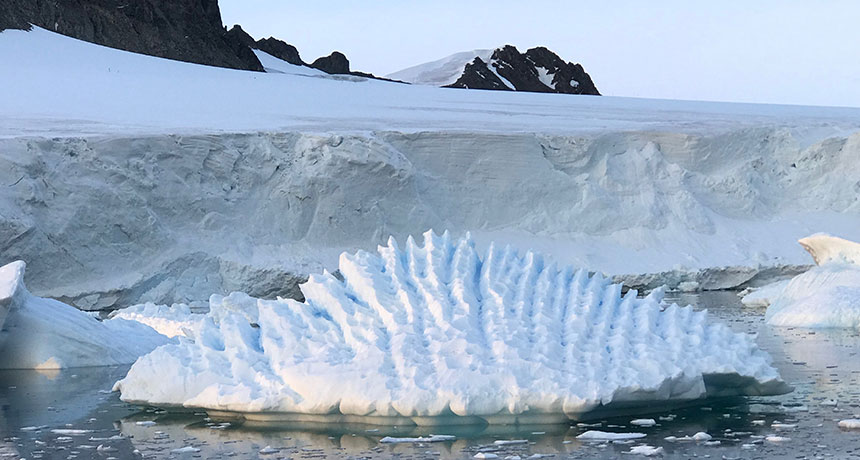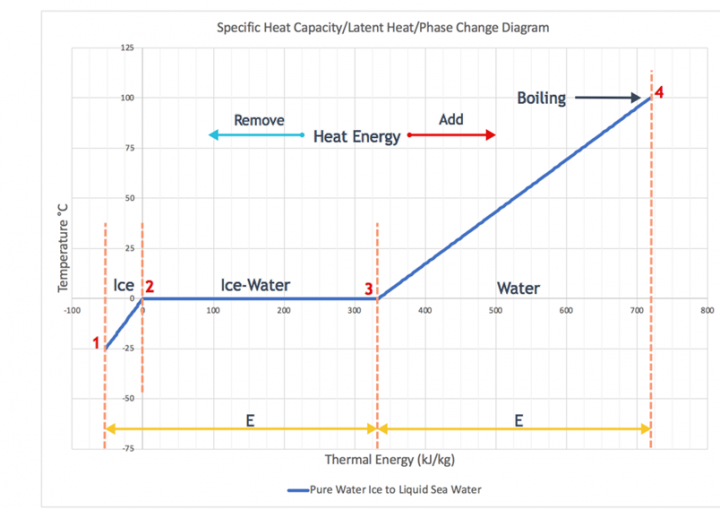
Aren’t facts and formulae and scientific truths sooooo annoying? It is so much easier just to proclaim that climate change is going to melt the ice caps and the sea level will rise 60m or some other errant nonsense.
Of course, it is absolutely true that if all the Antarctic ice melted, the sea level would rise 56m. But the media never temper that by asking the question, “What would that take?
Fortunately, someone like William Ward goes back to first principles and the established scientific formulae and actually works out what it would take to melt an entire ice sheet.
All the long, detailed, explanations are available in the source document but this is an attempt at a TL;DR summary.
Quote.In our present time, sunlight alone is insufficient to cause significant changes to ice sheet mass. Sunlight must act in concert with other effects such as cloud cover, water vapor and other ?greenhouse? gasses such as CO2. Regardless of the mechanisms, the Earth system must do two things to melt more ice: 1) retain more heat energy and 2) via the atmosphere, transport this heat to the poles and transfer it to the ice. Additional heat energy in the system cannot melt ice unless this transport and transfer happen.

It is essential to understand the latent heat of fusion because of the enormous amount of heat energy that is required to change the state of H2O from solid to liquid. The graph above shows the specific heat and phase change diagram for water. The blue line shows the temperature of water in ?C (y-axis) plotted against the change in thermal energy in kJ/kg (x-axis). It shows how temperature and energy are related as we go from cold solid ice to boiling liquid water. The average annual inland temperature of Greenland is -25 ?C and this is the reason for Point 1 on the line. If we start at Point 1 and progress to Point 2, this shows how much heat energy must be added to change the temperature of 1kg of ice from -25 ?C to 0 ?C. It is important to note that at Point 2, the ice is still 100% solid at 0 ?C.End quote.
The diagram reveals something interesting about the behavior of water. As we progress from Point 2 to Point 3, the water undergoes a phase change from solid to liquid. There is no temperature change as the ice becomes liquid water; however, a large amount of heat energy must be added. The energy that must be added to change the phase of water from solid to liquid is the latent heat of fusion. For melting ice, temperature alone does not inform us about what is happening to the system. To assess ice melting, we must understand the net change of energy. Whether we melt 1kg of ice or the entire ice sheet in Greenland, we can easily calculate the energy required to do so. Going from Point 1 to Point 3 requires 3.86?105 Joules of energy for each kg of ice mass warmed and melted. For simplicity, we call this quantity of energy ?E.?
The graph also shows what happens as we move from Point 3 (0 ?C liquid seawater) to Point 4 (seawater starting to boil at 100 ?C). It takes a measure of energy ?E? to move between Points 3 and 4, just as it does to move between Points 1 and 3. Therefore, the energy required to melt the ice is equivalent to the energy required to heat the meltwater to a boil at 100 ?C. (Note: the fresh water from the ice is assumed to flow to the oceans.)
| Energy to melt 1kg of polar ice from -25 ?C to 0 ?C water | <? Is Equal To ?> | Energy to raise the temperature of 1kg of seawater from 0 ?C to 100 ?C |
William then takes this basis to calculate the total energy required to melt the ice sheets and the circulatory processes that would deliver this heat to the ice sheets. In short:
Quote.The equatorial ocean temperature would need to rise to close to 55 ?C – about the same temperature as a cup of hot coffee!End quote.
Okay, but what about the atmosphere? Again the science is all in the article but the takeaway is:
Quote.The atmospheric temperature would have to be 7,300 ?C, which is 1,522 ?C hotter than the surface of the sun. Life on Earth would be in jeopardy from the increased atmospheric heat long before all of the ice melted.End quote.
Don’t sell your beachfront property just yet because it simply ain’t gonna happen.
Shall we tell Greta?




